What to do if yellow spots appear on the leaves of tomatoes: we diagnose the cause and effectively fight it
The yellowing of tomato leaves can be a natural physiological process of the plant. For example, the normal reaction of seedlings to transplanting in a greenhouse or open ground. However, a change in the color of the tops often indicates the presence of problems: errors in agricultural technology, infection with various infections, and pest attacks. It is not worth underestimating the severity of the situation, since we can talk about the loss of the entire crop.
Today we will tell you why they appeared on the leaves of tomatoes yellow spots, and we will reveal the methods of struggle and methods of prevention.
The content of the article
Diseases as the cause of the appearance of yellow spots on tomato leaves
Weakness for tomatoes is experienced not only by people, but also by all sorts of pathogenic microorganisms that cause bacterial, viral and fungal diseases of plants.
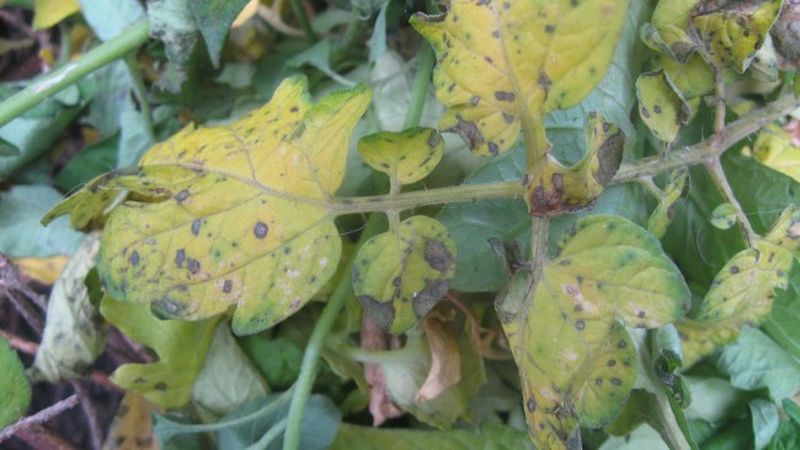
Septoria, or white spot
The causative agent is a fungus from the class of deuteromycetes Septoria lycopersici Speg.
Symptoms of the disease:
- at the initial stage, watery spots 2-3 mm in size appear on old leaves;
- then the spots turn white and grow up to 5 mm in diameter;
- a dark rim is formed around them, and in the center there are black-gray zones of accumulation of fungal spores (pycnidia).
Septoriasis It mainly affects leaves, less often sepals, stems and fruits. As the disease develops, the spots merge into one, the shoots die and fall off. As a result, the development of the whole bush slows down, since all the forces and nutrients are spent not on the development of fruits, but on the formation of new leaves.
Reference. The disease is typical for tomatoes grown in the open field.
Contribute to infection:
- hot weather;
- heavy rainfall;
- excessive watering.
Fungal spores actively multiply in moist soil, spread by insects, carried by wind, rain or drops of irrigation water, and can settle on work equipment and clothing.
Cladosporium, or brown, olive spot
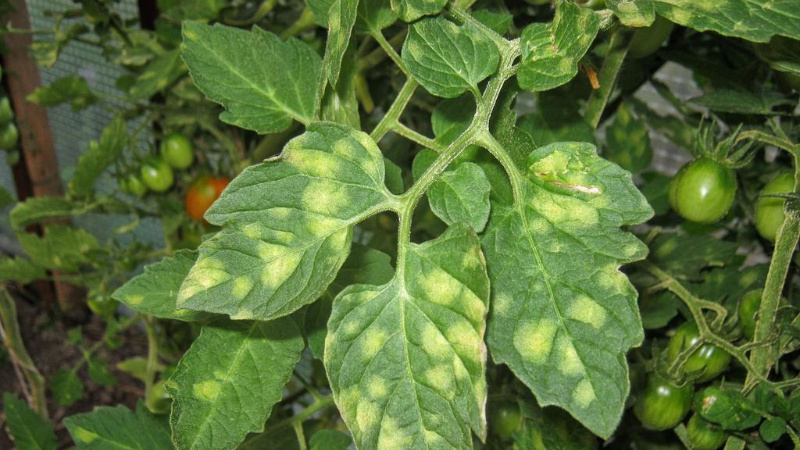
The causative agent is the Cladosporium fulvum Cooke mushroom, which strikes with its incredible vitality: it easily tolerates frost, drought, and can do without a host plant for 10 months. It reproduces asexually, forming conidia - light, like dust, spores that quickly spread not only through work tools and water, but also through the air.
Reference. Unlike septoria, this fungal disease often affects plants grown in greenhouses and greenhouses.
Symptoms:
- yellowish spots on the upper part of the leaf plate, sharply contrasting against the background of green tops;
- a light bloom forms on the back of the infected leaf, which later develops into brown spots;
- shoots become denser and velvety;
- without timely measures to combat the disease, the leaves turn yellow, dry and crumble.
The first signs of the disease usually appear at the stage of flowering and the formation of the tomato ovary. Cladosporium spreads upward, interfering with the normal nutrition of the plant and slowing down the ripening of fruits.
Factors for the development of infection are high humidity (90-95%) and temperature drops.
Mosaic
The causative agent is the Tomato mosaic tobamovirus virus. Planting seeds are usually infected.... The virus can also spread through soil (withstands high and low temperatures), from neighboring crops - potatoes, cucumbers. Disease carriers are often insects - ticks, aphids, beetles.
Symptoms:
- multicolored blotches form on the leaves;
- spots can be of various shapes and sizes, have a bright border;
- leaves stretch and curl;
- fruits are hit by a "kaleidoscope" of light green and white spots;
- the pulp of tomatoes begins to blacken and rot.
Conditions are favorable for the disease:
- heat;
- high humidity;
- lack of light;
- excess nitrogen in the soil.
There are several types of mosaic: ordinary, tobacco (spots grow into bumps), green or white, depending on the color of the blotches.
Chlorotic curl, or tobacco-necrotic mosaic
The causative agent is the Tomato leaf curl virus.
Symptoms:
- leaves brighten at the edges, in the center the color remains dark green;
- the upper shoots bend and curl, become as if curly;
- the growth and development of the bush is greatly slowed down;
- the green mass becomes smaller, the shoots are partially bare;
- flowers fall;
- ovaries harden and do not develop.
Disease is promoted by high humidity, and the virus spreads through:
- contaminated soil;
- infected seeds;
- pest - greenhouse whitefly.
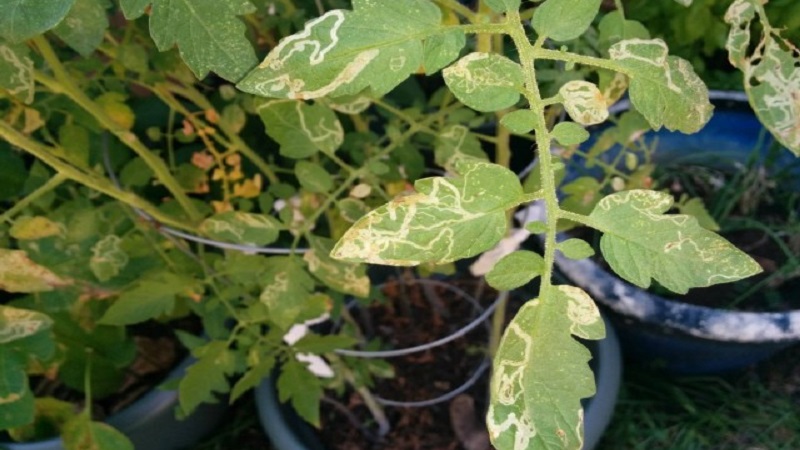
Alternaria, or dry spotting
The causative agent is the fungus Alternaria solani Sorauer.
Symptoms:
- dry yellow spots of various sizes appear along the edge of the leaf;
- then they spread and merge with each other;
- later, black plaque forms on the spots - accumulations of fungal spores;
- even after rain or watering, the spots remain dry.
Alternaria affects all vegetative organs of the plant: lower leaves first, then stems and fruits. On stems, spots are gray-brown, oblong; on fruits - dark brown, round, depressed inward. The pulp darkens and becomes unsuitable for food.
Attention! Tomatoes in glass greenhouses fall ill with Alternaria more often than under plastic or in open ground.
Promote spore germination:
- temperature above + 25 ° C;
- sudden changes in temperature;
- wetting the bush with insufficient soil moisture (abundant dew, alternating rainy days and dry weather);
- poor ventilation and high humidity in the greenhouse.
Fusarium
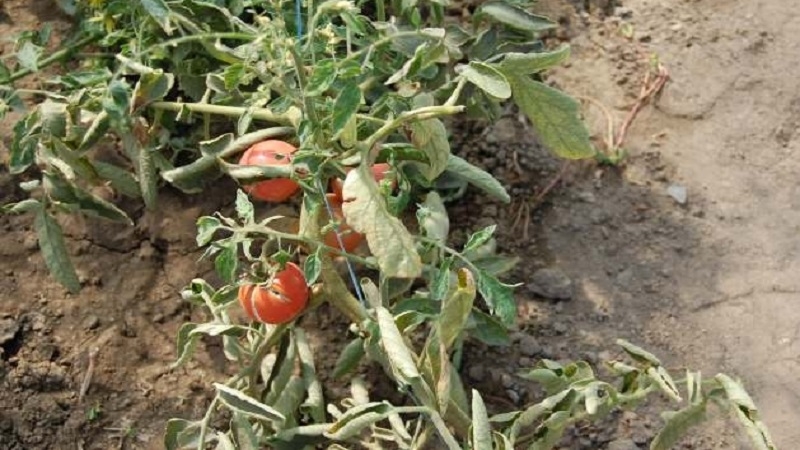
The causative agent is fungi of the genus Fusarium.
The disease affects the vascular system of the plant, blocking the channels and interfering with the circulation of nutrients. In addition, the death of shoots is associated with compounds that fungi release during their vital activity.
Symptoms:
- leaves turn pale green or yellow, curl, and then fall off;
- the veins are discolored, the petioles are deformed;
- the top of the bush gradually fades;
- at high humidity, a white bloom on the roots is clearly visible - the mycelium of the fungus;
- on the cut, the vessels are dark brown in color.
The danger of the disease lies in the fact that it is almost impossible to diagnose it before the flowering or fertilization period of tomatoes.
Dispose to fusarium:
- thickening of landings;
- proximity to groundwater;
- poor lighting and short daylight hours;
- drought, drying out of plant roots.
Agrotechnical mistakes and external factors
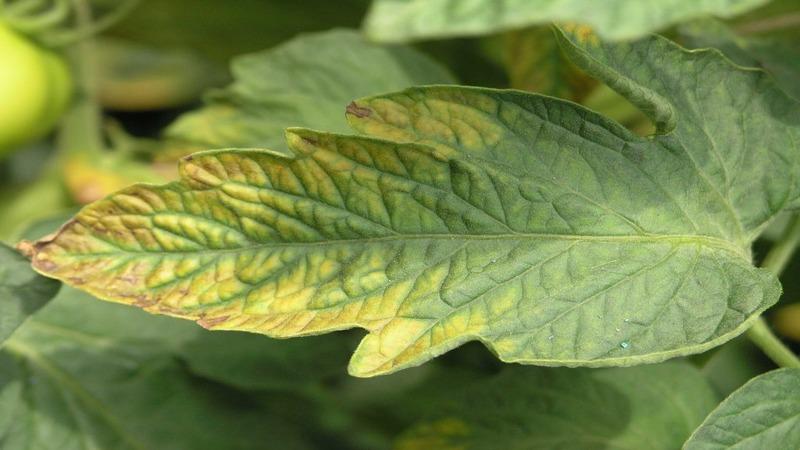
The appearance of yellow spots may indicate improper care of the plant. Most often this is due to excessive or insufficient watering, lack of nutrients, harmful effects of sunlight, etc.
Improper watering
Weaken the immunity of tomato bushes and make them more susceptible to disease, frequent and shallow watering. They create excess moisture in the upper layers of the soil, but not enough for normal plant nutrition.
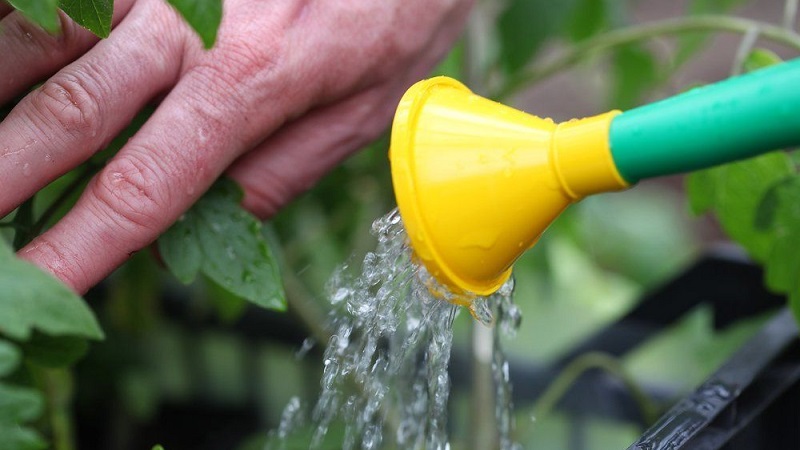
Fundamental rules:
- you need to water the tomatoes rarely, once every 7-10 days, but regularly and generously;
- the optimal watering time is in the morning, so that by the evening the topsoil in the garden has time to dry out;
- after 6-12 hours, it is advisable to loosen and mulch the soil;
- water should not get on the leaves and stems of the tomato.
With insufficient water supply, the plant poorly assimilates calcium from the soil, dark brown dry spots form on the tops of the fruits - signs of apical rot.
Malnutrition
A change in leaf color in tomatoes can be caused by an imbalance of micro and macro elements in the soil:
- with nitrogen starvation, the leaves turn white or yellow (chlorosis), and the veins acquire a bluish-red hue;
- excess nitrogen leads to "fattening" of the bushes, leaf necrosis - they become covered with yellow or brown spots, and then die off;
- with a lack of phosphorus, tomato leaves become smaller and curly, the lower parts acquire a purple tint;
- with a lack of potassium, yellow-brown spots spread along the edges of the sheet, over time the entire plate turns yellow and turns inward;
- with a sulfur deficiency, the upper leaves brighten, their veins turn red, the stems become thin, woody and fragile;
- to the fact that the plant lacks boron, indicates the curvature of the upper leaves - then they turn yellow or become light green, curl from ends to bases, the veins darken, acquire a dark brown or black color;
- iron deficiency is manifested by yellowing of the central part of young leaves, later the yellow color spreads and only the edges remain greenish;
- symptoms of manganese deficiency are similar to iron deficiency - yellow spots form between the veins, then the leaves dry up and fall off.
Ultraviolet burn
Too much light can be detrimental to a capricious plant like a tomato. In this case, yellow spots on the leaves are burns... Most often, they form where water gets after watering or dew falls. The drops work like a magnifying glass, increasing the effect of the sun's rays. Thermal tissue damage is fraught with further necrosis.
Other reasons
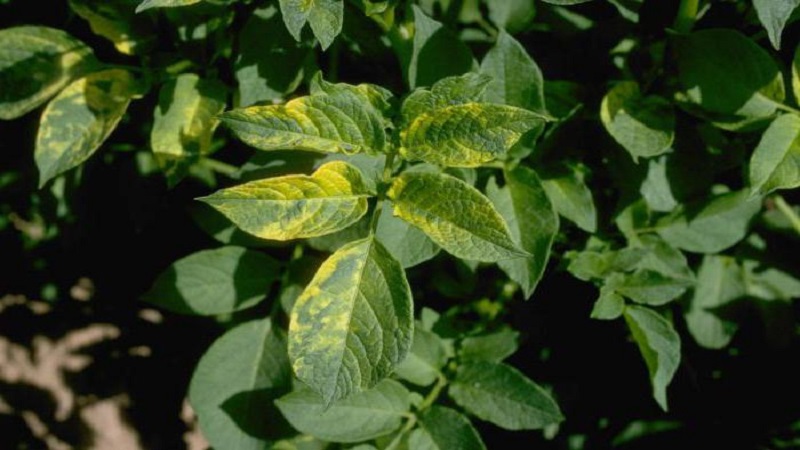
Other factors leading to yellowing of the leaves of tomato bushes:
- poor lighting leads to yellowing of the lower leaves, to which light penetrates the worst;
- problems with the root system - their damage during inaccurate planting of seedlings, loosening the soil, pulling out weeds;
- hypothermia;
- presence of pests - wireworm, bear, aphids, spider mite.
Yellow spots on greenhouse tomatoes
In greenhouses, more often than in open ground, favorable conditions are created for the development of various diseases:
- waterlogged soil;
- increased air temperature;
- irregular ventilation.
In addition, spores of pathogenic fungi and other microorganisms can settle on structural elements.
Reasons for the appearance of spots on the leaves of tomatoes in the open field
In open beds, the most common problems are:
- poor quality, contaminated soil;
- an excess of light and sunburn on the tops;
- long rains and heavy dew;
- sudden changes in temperature.
How to identify the cause
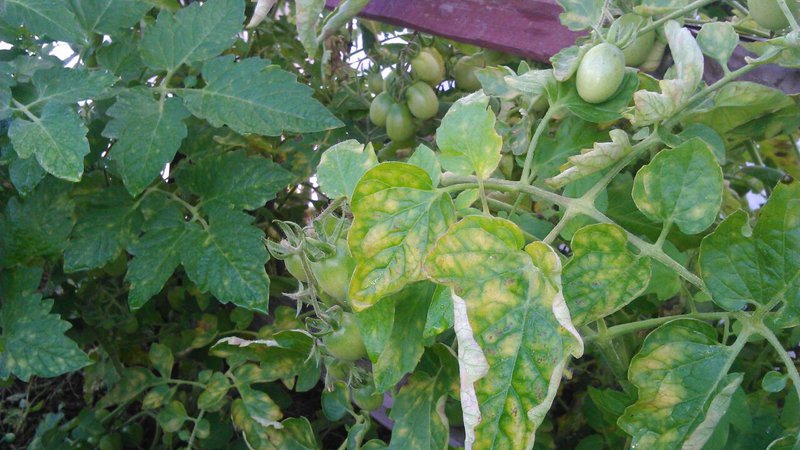
First of all, a visual inspection of the plants is required.
Attention should be paid to the following details:
- which leaves are affected by spots - upper or lower;
- on which surface of the sheet plate there is a plaque - upper or lower;
- Do the spots spread to other vegetative organs - stems, flowers, ovaries and fruits;
- condition of the veins;
- the presence of damaged vessels on the cut.
Then you should analyze the agrotechnical methods and conditions for growing tomatoes:
Comparing the symptoms of diseases and the consequences of violation of agricultural technology with the identified problems, one can judge the reason for the yellowing of tomato leaves.
What to do
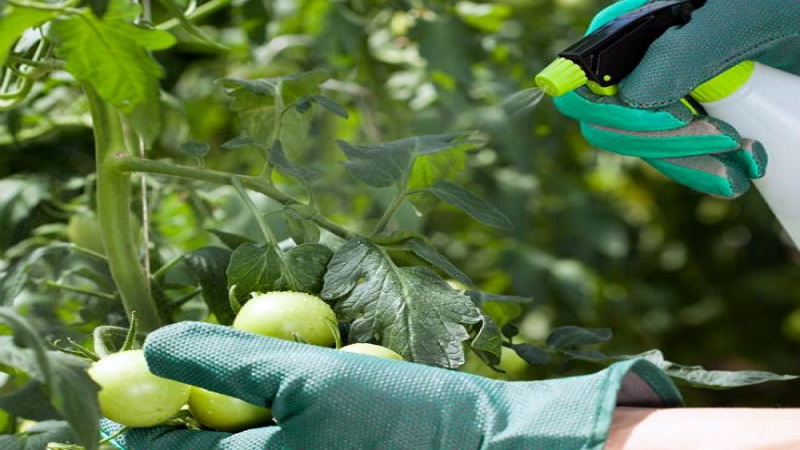
The first measures when any disease is detected:
- isolation and subsequent destruction of the infected bush;
- treatment of other plants with special solutions.
In the fight against diseases, help:
- folk recipes - ash, soap solution, milk serum, iodine;
- broad-spectrum fungicides - Fundazol, Ordan, Previkur, Bravo, HOM, Poliram, etc.);
- biological agents - "Fitoflavin", "Fitosporin", "Pseudobacterin-2", etc.
The lack of micro- and macroelements in the soil is compensated by regular feeding with complex mineral fertilizers.
Attention! To avoid poisoning, tomatoes from the treated bushes can be eaten after 3 weeks at the earliest. Unlike fungicides, substances of biological origin do not penetrate the fruit, but work exclusively on the surface, therefore they are considered safe for humans.
Preventive measures

Preventive measures will help prevent disease and harmful effects of the environment:
- thorough preparation of the site in the fall - digging up the soil, applying fertilizers;
- regular disinfection of greenhouse and greenhouse frames, equipment, work clothes;
- compliance with the crop rotation rule - a break of 3-4 years before planting tomatoes in the same area;
- the use of varieties and hybrids that are resistant to diseases;
- disinfection of seeds and planting soil - calcination, freezing, treatment with disinfectant solutions;
- timely destruction of weeds and remnants of infected plants;
- regular airing of greenhouses and greenhouses;
- shading seedlings on hot, sunny days;
- control over the level of humidity, optimal watering;
- loosening and mulching soil under bushes;
- timely application of mineral fertilizers and organic fertilizing.
Conclusion
Yellow spots on tomato tops are of serious concern to the gardener. In the case of natural aging and leaf death, these are vain fears. If the plants are infected or agricultural technology is violated, timely and decisive action must be taken to preserve the harvest.